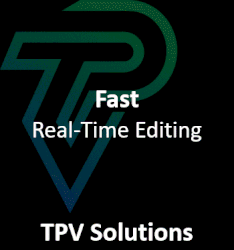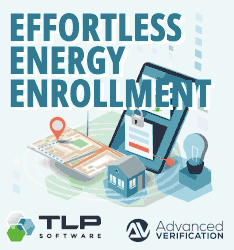|
|
|
|
|
Major Utilities Say Mandatory Dual Billing Could Be Required For 18-Month Period
The following story is brought free of charge to readers by VertexOne, the exclusive EDI provider of EnergyChoiceMatters.com
Several Maryland utilities informed the PSC that dual billing may be required for some, or all, residential retail supplier customers for a period of up to 18 months in order to effectuate a new statutory ban on residential purchase of receivables (POR) on January 1, 2025 for new or renewed contracts
As previously reported by EnergyChoiceMatters.com, several of the utilities had raised their belief that mandatory dual billing would be necessary as a means of SB1 compliance in a conference held earlier this week. The utilities today filed compliance plans regarding SB 1's prohibition on residential POR, which provide more details concerning the billing issues
Unless noted otherwise, all references to POR in this story should be construed as meaning residential POR. Utilities in their compliance plans generally did not highlight the issues, if any, arising from the continued offering of non-residential POR as residential POR is banned
Generally, the utilities ultimately owned by Exelon stated that mandatory dual billing would be required during a 12-18 month implementation period for a transition away from POR, with the question being whether all residential customers, or only new/renewed customers not eligible for POR, would be subject to mandatory dual billing
Potomac Edison is able to implement a payment processing hierarchy, different from the pro-ration required by rule if POR isn't used, under a 6-month timeline. Potomac Edison did not specifically propose that dual billing be mandated during any part of this 6-month implementation period which extends beyond January 1, 2025, though such requirement may be implicit
Specific plans are discussed further below
Utilities had been directed to file multiple compliance plans based on scenarios of whether POR is continued for existing residential contracts after January 1, 2025, or whether POR is ended for all customers
Scenario 1 - POR Ends for All Residential Customers as of January 1,
2025
Baltimore Gas & Electric
Barring PSC rule changes or waivers, BGE would implement a pro-rata methodology to address payments made under utility consolidated billing (UCB)
However, BGE said that pro-ration is not its preferred approach, with BGE instead proposing a payment waterfall that pays oldest utility arrears first, then oldest supplier arrears, then current utility charges, then current supplier charges, and lastly any other value-added charges. A rule change or waiver would be needed for this payment processing mechanism
BGE said that it could not implement its "preferred" solution by January 1, 2025
Based on BGE's response to a PSC question seeking the implementation timeline for the utility's "preferred" solution, it is understood that BGE would need 12 to 18 months to implement its preferred solution of the payment hierarchy described above
During this 12-18 month implementation period, BGE proposes to mandate dual billing for all shopping customers
To the extent proration is adopted, BGE said that implementing a pro-rata system would take 12 to 18 months.
BGE faulted a pro rata approach because delivery arrearages are not prioritized ahead of supply, as occurs under POR, with BGE saying that pro rata thus exposes customers to a greater likelihood of disconnection
BGE also sought clarification from the PSC on various pro rata design elements to the extent the PSC orders the use of pro rata, including whether the proration is a defined split (e.g. 50-50) or is based on the ratio of supply versus utility charges in the amount due. BGE also raised questions concerning the rule's use of the term "the customer’s total bill" in defining the amounts that must be pro-rated, and whether this is defined as current charges or all outstanding charges (past due)
Pepco/Delmarva
The PHI utilities propose to allocate payments in a waterfall manner, paying off the first category before proceeding to the next, and so on. Specifically, the PHI utilities propose to allocate payments as follows: first oldest utility arrears, then
oldest supplier arrears, then utility current charges, then supplier current charges, then any
other value-added charges.
This was the payment posting mechanism that was in place prior to RM 17, and the PHI utilities said that this is the posting order currently used for partial payments (ed. note: except, under the current system, retail suppliers are paid in full minus the POR discount, so suppliers are not impacted by partial payments as they would be under a non-POR system)
While noting that a firm timeline for implementation of a new payment processing mechanism is ultimately dependent on the specific design ordered by the PSC, Pepco/Delmarva anticipate that it would take at least 12-18 months, from the date of a final PSC order on a new mechanism, to end POR and implement the new mechanism
Pepco/Delmarva propose that suppliers be required to use dual billing for this implementation period
Potomac Edison
Potomac Edison proposes to pro-rate payments under UCB, consistent with the current rule which allows proration as an alternative to POR
Potomac Edison said that implementation of a pro-ration mechanism would take 18 months
Potomac Edison raised several concerns about implementing a pro rata mechanism under the current rules and said that the PSC should issue guidance on several items. Notably, the proration rule at COMAR 20.53.07.06(A) prohibits disconnection for failure of a customer to pay supplier charges. Potomac Edison said that certain supplier charges may need to be satisfied to clear certain distribution charges.
Potomac Edison said that a payment posting hierarchy could be used under UCB in the interim while the pro rata mechanism is developed
This hierarchy would generally pay utility arrears, then supplier arrears, then current utility charges, then current supplier charges. Implementing this interim measure would take 6 months, with the work starting no earlier than mid-September 2024. Potomac Edison mentioned dual billing as an "alternative option" without specifically stating that dual billing would be mandatory for any part of the 6-month implementation period which extends beyond the January 1, 2025 end date for POR
--------------------------------------------
Scenario 2 - POR Ends Only for New & Renewed Residential Contracts as of January 1, 2025
BGE
BGE said that it would be required to, "modify, build, and maintain two different billing system processes," if POR were allowed to continue for existing contracts, while prohibited for new contracts
BGE said that a manual process to address grandfathered contracts is not feasible due to the volumes of transactions
BGE said that UCB could continue for existing POR-eligible customers if dual billing were mandated for all new contracts. This would still require a system change to automatically reject UCB enrollments after January 1, 2025, which would take 3-6 months to complete
Pepco/Delmarva
The PHI utilities said that there is "no immediately feasible solution" for maintaining UCB with POR for existing contracts, while ending POR for new/renewed contracts under UCB
Given the "thousands" of supplier charges billed daily, Pepco/Delmarva said that a manual process to maintain POR for some customers would lead to billing and payment delays, with the potential for errors
Pepco/Delmarva proposed as an alternative requiring dual billing for new/renewed enrollments as of January 1, 2025. This would allow UCB with POR to continue for existing customers, since there would be no need to separate UCB customers between POR-eligible and POR-ineligible
Pepco/Delmarva said that this would still require development of a system to reject new UCB enrollments. Pepco/Delmarva further noted that they would have no means to verify if customers under UCB are actually eligible for POR under grandfathering and if a customer is being served under an existing or renewed contract
Potomac Edison
Similar to Scenario 1, Potomac Edison proposes to pro-rate payments under UCB, consistent with the alternative to POR under current rule, for non-POR eligible accounts.
Potomac Edison said that Scenario 2 would additionally require more system changes to allow POR for grandfathered accounts under UCB, including EDI identification of eligible accounts, etc.
To the extent these billing system changes were not adopted, Potomac Edison said that dual billing would be an option for accounts not eligible for POR.
PC 65
ADVERTISEMENT ADVERTISEMENT Copyright 2024 EnergyChoiceMatters.com. Unauthorized copying, retransmission, or republication
prohibited. You are not permitted to copy any work or text of EnergyChoiceMatters.com without the separate and express written consent of EnergyChoiceMatters.com
August 9, 2024
Email This Story
Copyright 2024 EnergyChoiceMatters.com
Reporting by Paul Ring • ring@energychoicematters.com

NEW Jobs on RetailEnergyJobs.com:
• NEW! -- Director of Policy and Research, Retail Energy
• NEW! -- Director, Load Forecasting
-- Retail Supplier
• NEW! -- Wholesale Markets Analyst -- Retail Supplier
• NEW! -- Origination Analyst
-- Retail Supplier
• NEW! -- Settlements Analyst
-- Retail Supplier
• NEW! -- Billing Supervisor
|
|
|
|
|







